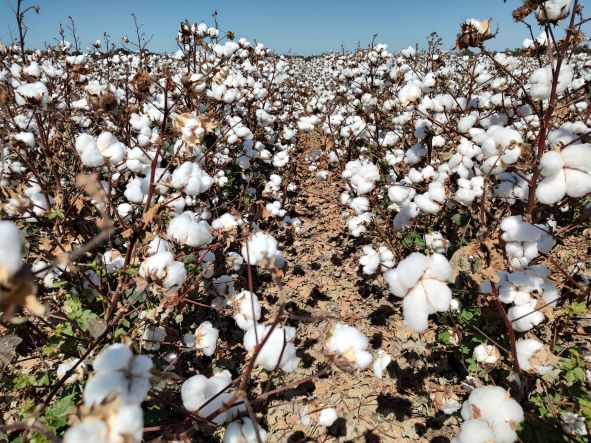Finding The Floor For Cotton Price
The 2007/08 season showed a small decrease from the previous year in China’s cotton production, with only 7.9 million tons being harvested. The decrease in this year, though, is sure to be more sizeable, reported Wenlong Gong, CEO of CNCotton in Beijing. “We estimate acreage will decrease by 15% this year,” he says. “The monitoring system is not entirely complete, but we double check the numbers with ginners as well as growers.”
As expected from the reported shortages of food from 2008, most of these acres will be replaced with grains, but other cash crops are becoming competitive as well, Gong says. While recent surveys confirm that cotton planting will be down in China in 2009, Gong says cotton will be going into the reserve so the supply will tighten dramatically over the next 12 months.
“It appears that, for now, at least on the futures level, cotton prices have bottomed,” says Ed Jernigan, managing director of FCStone Asia. Presenting information at the Cotton Economic Outlook Symposium at the Beltwide Cotton Conferences in the U.S last month, Jernigan said that the situation for cotton had actually improved. “The large Chinese mill everyone was concerned about did not go bankrupt. Those rumors were false, and it is actually making money. The Chinese did not lay down or back out on some contracts, and shipments have actually picked back up to Pakistan.”
Prices, he says, have begun to rally, and this is in part due to actions of the Chinese government. China’s National Cotton Reserve Corporation buys cotton when the government assesses the prices as being too low; they then sell cotton when prices become too high. “Its job basically is to stabilize prices,” says Jernigan.
In 2007, the Chinese cotton farmer received 6 yuan per kilogram for his seed cotton. With these high prices and improved technology, the farmers expected an increase in earnings this year. Once the economic crisis set in and textile demand dropped, price responded. “The Chinese farmer has been devastated by cotton,” Jernigan says.
Gong said the sudden drop in the seed cotton price resulted in serious losses, which led the government to purchase 2.72 million tons of cotton. “They want to protect the growers’ interests, as well as ginners and merchants. But the textile mills are suffering; we can not protect them simultaneously,” he says.
What About the Mills?
The domestic mills can not get enough imported cotton, Gong says, with the supply decrease. “This could increase price; everything had lived up to an increase in price, but now product demand is in question.
“According to our predictions, there are seven million tons available to fill the 9 million tons expected to be consumed by our mills this year,” Gong reports. Last year, the country consumed 11 million tons.
Jernigan expanded on the severity of the problem. “Over the past three or four years, China’s cotton consumption was booming and the rest of the world was booming, so there was a rapid expansion in textile mill capacity. Basically, more mills have been put in place than the demand warranted.
“We’ve been expecting that at some point there would be a rationalization of this excess capacity. We thought it would happen over several years, but it’s all happened in about six months time. Now as much as one-third of China’s mills are not operating or have gone bankrupt,” he says.
The consequence of this slowdown, Gong says, helped create the instability in Chinese cotton prices. Because of this, the government now owns a third of the 2007/08 cotton crop. The National Cotton Reserve Corporation is structured in its purchases, though, Jernigan says. “They said they would buy cotton substantially above the market price, but only market-sized bales HVI-classed and produced by the gin,” he adds.
India’s Role
As far as they know, Gong says, India exported a good deal of cotton last year, yet domestic supply is troubled. “The Indian government controls exports. Chinese mills often complain about supply from India, so they probably will not deal with them in the next year,” he reports. Indian cotton could have a large market share in China, he says, but the U.S. is more competitive because of quality and reliability.
In 2008, the Indian government raised the minimum support price (MSP) that could be paid to farmers for their cotton; this year the MSP is higher than it has ever been, with an increase of as much as 40% from the previous season, Jernigan reported at the Beltwide Conference. This strong move from the Indian government was most likely the result of political pandering during an election year.
Jernigan says he believes the Cotton Corporation of India will buy a significant amount of the crop, as well, which will be sold into the market for export. “Last year, when India had a record crop, the price went down to where Indian cotton was the most competitive in the world. Now U.S. cotton is the most competitive because of the way their marketing loan program works,” Jernigan says.









